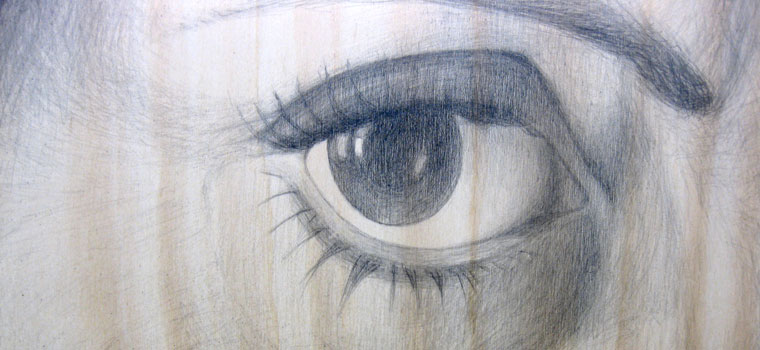
rina franz
- absent landscape [13]
- fragmented narration [10]
- the invisible line [07]
stockroom work
- ric spencer, movie stills set in stone the west australian, 11 june 2010
- ric spencer, throwing out a line essay
- current cv
In 2010 I was awarded a six month residency in Basel, Switzerland. This was my first long-term residency outside of Australia and I had no expectations of how this experience would evolve. All I had was a concept to investigate and a desire to increase my knowledge of the world outside my own.
Being in a different environment allows you to take risks and view things differently. It also exposes you to new cultural experiences where political, social and environmental issues emerge.
During my residency I discovered the glaciers as I walked across some of the most beautiful Alpine routes. I became strongly interested on the environmental problem of the melting glaciers as I was directly exposed to this phenomena.
This environmental problem is not just a Swiss problem but a global concern and I was drawn to this issue not only for its environmental effect but also for its social and psychological impact.
What is also interesting is that the melting glaciers are changing some of the natural borders between Switzerland and neighboring European countries. This has particular significance in a small and unique country like Switzerland where borders are still guarded within a borderless unified Europe.
My research during the residency involved numerous trips across some of the most incredible Swiss glaciers. Equipped with a backpack I carried only the essential material to document the locations of interest.
Sketches and ideas were recorded on paper and visual diary during the summer, autumn and winter. This allowed me to see the various changes in the landscape in the most affected areas. I also took advantage of using the snow as a medium in the small studies as to keep something embedded in the moment.
Absent...Landscape is a body of work in progress developed in response to my research of the melting [Swiss] glaciers. Sadly, this breathtaking view of the world is quickly disappearing.
Glaciers are large masses of snow, ice and rock debris that accumulate in great quantities and begin to flow outwards and downwards under the pressure of their own weight. They are formed when yearly snowfall in a region far exceeds the amount of snow and ice that melts in a given summer.
In Switzerland, glaciers play an important role as water reservoirs for hydropower production [generating 50% of the country's electricity]. They are also considered an important attraction for tourists.
The latest report on glaciers issued by the Swiss Academy of Sciences says that of the glaciers whose length it monitored in 2010, 86 had retreated, six had barely changed, and three had advanced slightly. The greatest retreat was measured at the Gauli glacier in canton Bern, whose tip had shrunk by 196 meters. There has been a noticeable loss in mass since the 1990s.
Also the glaciers between Switzerland and Italy have drifted over the decades sending both sides to the drawing board to redefine parts of the border.
Around ten per cent of the 750Km border between Switzerland and Italy will be affected and will in some places move 100 meters at most, authorities say.
Rina Franz
2013
Rina Franz has enjoyed an impressive career as a professional practicing artist. Born in Rome, she initially studied architecture before relocating to Western Australia. Once settled Rina returned to study, in particular, painting at Edith Cowan University in Western Australia. She was awarded a Master of Arts [Visual Arts] from Curtin University, Perth, in 1991.
Rina has participated in over 30 group exhibitions, both within Australia and overseas; she has been the recipient of numerous art awards, and has worked on a number of significant arts projects again, both within Australia and overseas.
- TURNER GALLERIES | showcasing contemporary art
at 470 WILLIAM STREET NORTHBRIDGE WESTERN AUSTRALIA 6003 - TURNER GALLERIES HAS NOW CLOSED.
This website is an archived record of the exhibitions and artwork shown at the gallery. - Turner Galleries acknowledges the Whadjuk Nyoongar people as the Traditional Owners of the lands and waters where Turner Galleries is situated, and pay our respect to Elders past, present and emerging.
- Website © 2000-2024 TURNER GALLERIES. All images are © the artists and are not to be used without permission.
- This is a millapede project.